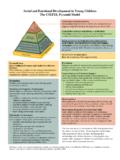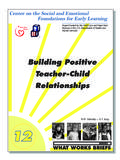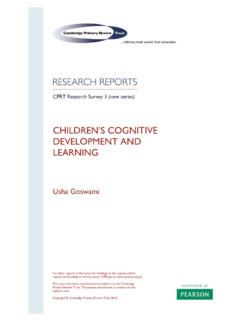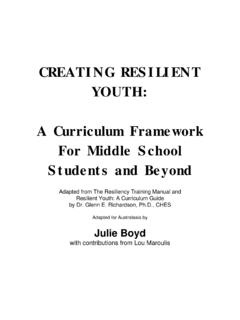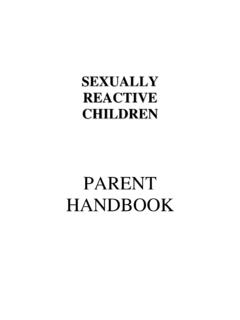Transcription of PROMOTING CHILDREN’S AGENCY IN EARLY …
1 Novitas-ROYAL (Research on Youth and Language), 2011, 5 (1), 15-38. 15 PROMOTING children S AGENCY IN EARLY childhood education Angela MASHFORD-SCOTT* & Amelia CHURCH** Abstract: Using conversation analysis (CA), this study identifies features of teacher-child interactions that enable opportunities for children s active participation in EARLY learning environments, specifically, how teachers promote children s AGENCY in the resolution of their peer disputes. The analysis focuses on two particular episodes of teacher intervention selected from a total of 28 hours of video-recorded observations in two EARLY childhood education settings with three- to five-year-old children .
2 The first demonstrates how a teacher can facilitate the collaborative resolution of a dispute; the second demonstrates how a teacher can respond to a child s report of conflict by positioning herself as a non-participant. While different strategies were utilized in each of these episodes, redirecting responsibility to the children themselves was found to be the key practice in facilitating children s AGENCY in these interventions. Knowledge and insights gained through conversation analysis contribute to our understanding of how teachers and children collaboratively achieve opportunities for AGENCY . Keywords: EARLY childhood education , Conversation Analysis, child AGENCY , teacher intervention zet: Bu al ma, Konu ma z mlemesi kullanarak, okul ncesi evrelerde ocuklar n aktif kat l m na imkanlar sa layan retmen- ocuk etkile im zelliklerini ( zellikle retmenlerin ocuklar n etkinli ini ihtilaflar n z m nde nas l te vik etti ini) belirlemektedir.
3 Z mleme, 3-5 ya aras ndaki ocuklar i eren iki okul ncesi e itim ortam ndaki 28 saatlik video-kay tl g zlemlerden se ilmi iki b l ml k retmen m dahalesine odaklanmaktad r. lki bir retmenin bir anla mazl i birliksel olarak nas l z mledi ini; ikincisi, bir retmenin, ocu un anla mazl k ikayetine kat l mc olmadan nas l tepki verebilece ini g stermektedir. Her bir b l mde farkl stratejiler kullan lmas na ra men, sorumlulu u ocuklara y nlendirmenin her iki durumda da ocuk etkinli ine olanak sa lamas a s ndan anahtar uygulama oldu u bulunmu tur. Konu ma z mlemesi nden edinilen bilgi ve i g r ler, retmen ve rencilerin etkinlik i in f rsatlar i birlik i olarak nas l de erlendirdi ini anlamam za olanak sa lamaktad r.
4 Anahtar s zc kler: Okul ncesi e itim, Konu ma z mlemesi, ocuk etkinli i, retmen m dahalesi Introduction1 In Australia, a growing awareness of the formative impact of the EARLY years2 on children s long-term development, has intensified sociopolitical interest and discussion surrounding how to give * PhD Candidate, Melbourne Graduate School of education , The University of Melbourne, Australia, ** Lecturer, Melbourne Graduate School of education The University of Melbourne, Australia, 1 This research was funded by a grant from the Collier Charitable Fund; thanks are due to the children and teachers who participated in the project.
5 2 In Australia, and for much of international EARLY childhood education , terms such as EARLY childhood and young child typically refer to the period of a child s life prior to entry into formal schooling ( birth to approximately five years of age). Therefore, EARLY childhood settings , environments or classrooms refer to educational and care programs or services that young children attend outside of the home, which are implemented by EARLY childhood trained professionals. Special Issue: Conversation Analysis in Educational and Applied Linguistics Mashford-Scott & Church 16 children a good start to life, and what constitutes best practice in EARLY childhood settings (Arthur, et al.)
6 , 2008; Nuttall & Edwards, 2007; Pramling Samuelsson, Sheridan & Williams, 2006; Woodhead, 2006). In recent years, the promotion of young children s AGENCY has been identified as foundational to learning, development and wellbeing outcomes. It is widely acknowledged that children learn and develop through active interaction with others and participation in their environments ( Bandura, 2001; Carpendale & Lewis, 2006; Corsaro, 2005; DeVries & Zan, 1994). Research demonstrating the influential role of AGENCY and interactions in shaping neurological functioning provides particularly strong empirical support for this ( Bandura, 1997; 2001; National Scientific Council on the Developing Child, 2004).
7 In addition to the recognition of the relationships between AGENCY and children s development, the promotion of children s rights to AGENCY has received a steady increase in attention, both nationally and internationally. The United Nations Convention on the Rights of the Child (UNCRC, United Nations, 1989), the first legally-binding document to afford children with the same comprehensive human and citizenship rights as adults, positions children as entitled to autonomy, and to fully participate in, and influence matters that concern them (Coady & Page, 2005; Page, 2008; Tobin, 2005; United Nations, 1989).
8 In Australia, the recently released national EARLY childhood curriculum, the EARLY Years Learning Framework (Australian Government Department of education , Employment and Workplace Relations for the Council of Australian Governments, 2009), positions the enactment of AGENCY and autonomy as a key learning outcome for children , from both an educational and human rights perspective. Research in EARLY childhood education is increasingly paying attention to classroom interaction, demonstrating that the quality of interactions between the teacher and children is a leading indicator of an effective EARLY childhood program ( Mashburn, Pianta, Hamre, Downer, Barbarin, Bryant, Burchinal, EARLY & Howes, 2008).
9 There is also a substantial body of research which has shown that peer interactions, particularly in conflict situations, provide important opportunities for children 's social, cognitive and moral development ( Maynard, 1986; Goodwin, 1990, 2006; Chen, Fein, Killen, and Tam, 2001; Cobb-Moore, Danby & Farrell, 2008; Green & Cillessen, 2008; Church, 2009). Participation in the resolution of disputes provides opportunities for the development of AGENCY and autonomy (DeVries & Zan, 1994; Mullin, 2007), and the social skills that enable ongoing positive relations with peers. Indeed, no other single phenomenon plays as broad and significant role in human development as conflict is thought to (Shantz & Hartup, 1992, p.)
10 11). In this paper, we are interested in how conflict is managed in EARLY childhood settings, specifically how it is that teachers enable children to autonomously manage peer interactions. We use conversation analysis (CA) to explore teacher interventions in children s disputes as a site for PROMOTING the development of children s AGENCY , autonomy and self-efficacy; a locus for enhancing educational outcomes, social inclusion and participation, and psychological wellbeing. The question of how teachers promote children s AGENCY in their day-to-day interactions in EARLY childhood classrooms, is one that has received limited attention.

